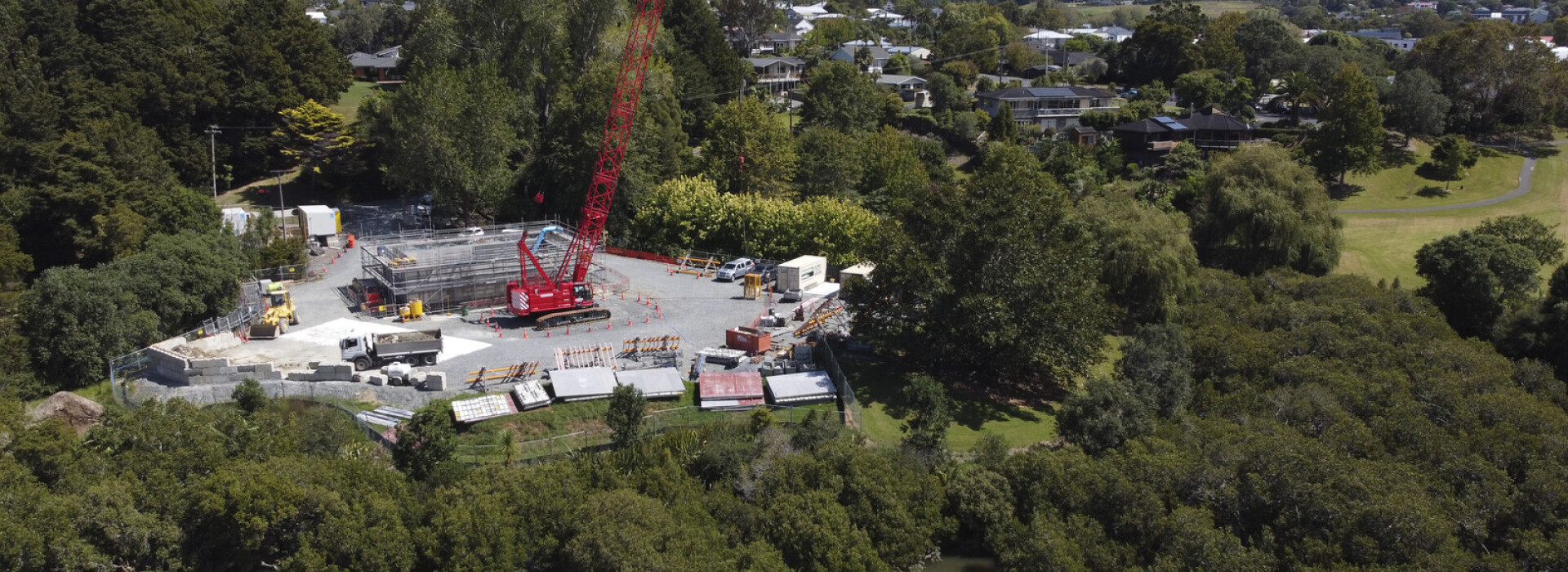A red crane boom is a temporary landmark feature in the riverside town of Warkworth, north of Auckland. Visible for kilometres, the boom marks the spot where McConnell Dowell are delivering Watercare’s Warkworth Pump Station in Lucy Moore Memorial Park.
The crane extension is the only indication to the surrounding community that there is a major construction project underway with the compact, efficient, and well managed site nestled neatly by the river.
The site footprint belies the extensive facilities being built, including two underground structures – one being a 17m by 10.5m wetwell/drywell rectangular chamber to a depth of 13 metres, and the other a 15m diameter circular emergency storage tank to a depth of 8 metres.
The pump station is a component of the Warkworth to Snells Transfer Pipeline scheme to convey wastewater from Warkworth to Snells Beach to cater for future growth and enable Watercare to decommission the existing Warkworth Wastewater Treatment Plant which discharges into the Mahurangi River.
The construction of the wetwell / drywell and the storage tank promotes the caisson (sunk shaft) method refined by McConnell Dowell on other projects in NZ and internationally. Simplified, this method of construction works by using the drag force of the soil that acts against the exterior and interior caisson walls. Excavating the soil inside the caisson reduces the drag force along the interior walls, allowing the caisson to sink under its own dead weight.
It was selected for the distinctive benefits it offers to the location and overall project delivery:
- A condensed construction area due to minimised excavation and working space required
- Eliminates the requirement for piling or other ground support systems for the underground structures
- Less noise and vibration impact on the surrounding community because there is no backfilling required
- Minimised time required on-site, which further reduces overall community impact
- Enhanced safety to site workers and park users
- Reduced carbon footprint as there is no material brought in for backfilling around the sunk structures
- Decreased impact and risk to the surrounding sensitive environment
- Negates challenges encountered with excavating in poor ground conditions
The project is due for completion at the end of 2023.




